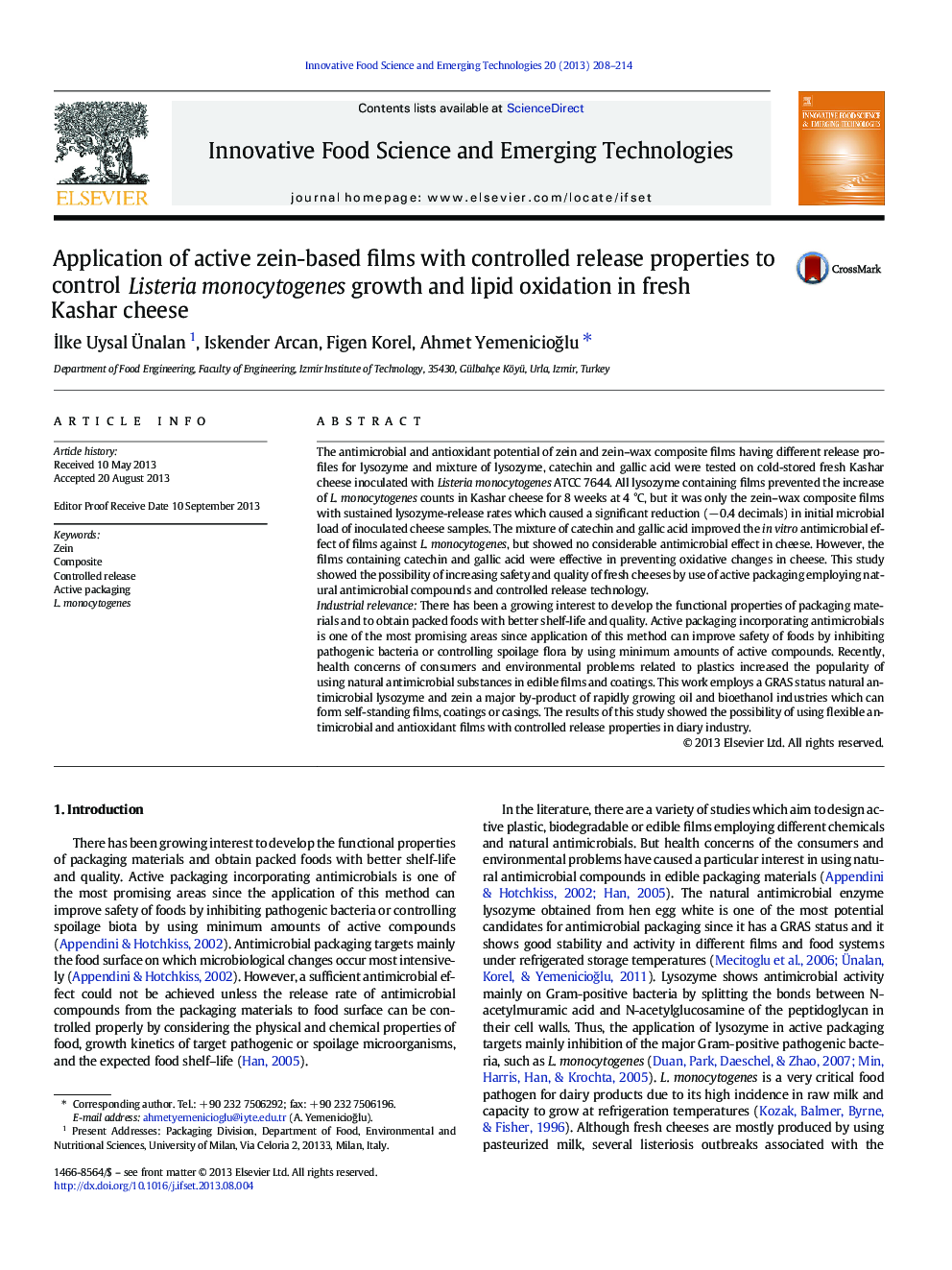| Article ID | Journal | Published Year | Pages | File Type |
|---|---|---|---|---|
| 2086591 | Innovative Food Science & Emerging Technologies | 2013 | 7 Pages |
•All lysozyme containing films prevented growth of Listeria monocytogenes on cheese.•Films with sustained lysozyme release rates are more effective than standard films.•Films with catechin and gallic acid did not show antimicrobial effect in cheese.•Incorporation of phenolic compounds into films reduced oxidation of cheese.
The antimicrobial and antioxidant potential of zein and zein–wax composite films having different release profiles for lysozyme and mixture of lysozyme, catechin and gallic acid were tested on cold-stored fresh Kashar cheese inoculated with Listeria monocytogenes ATCC 7644. All lysozyme containing films prevented the increase of L. monocytogenes counts in Kashar cheese for 8 weeks at 4 °C, but it was only the zein–wax composite films with sustained lysozyme-release rates which caused a significant reduction (− 0.4 decimals) in initial microbial load of inoculated cheese samples. The mixture of catechin and gallic acid improved the in vitro antimicrobial effect of films against L. monocytogenes, but showed no considerable antimicrobial effect in cheese. However, the films containing catechin and gallic acid were effective in preventing oxidative changes in cheese. This study showed the possibility of increasing safety and quality of fresh cheeses by use of active packaging employing natural antimicrobial compounds and controlled release technology.Industrial relevanceThere has been a growing interest to develop the functional properties of packaging materials and to obtain packed foods with better shelf-life and quality. Active packaging incorporating antimicrobials is one of the most promising areas since application of this method can improve safety of foods by inhibiting pathogenic bacteria or controlling spoilage flora by using minimum amounts of active compounds. Recently, health concerns of consumers and environmental problems related to plastics increased the popularity of using natural antimicrobial substances in edible films and coatings. This work employs a GRAS status natural antimicrobial lysozyme and zein a major by-product of rapidly growing oil and bioethanol industries which can form self-standing films, coatings or casings. The results of this study showed the possibility of using flexible antimicrobial and antioxidant films with controlled release properties in diary industry.
